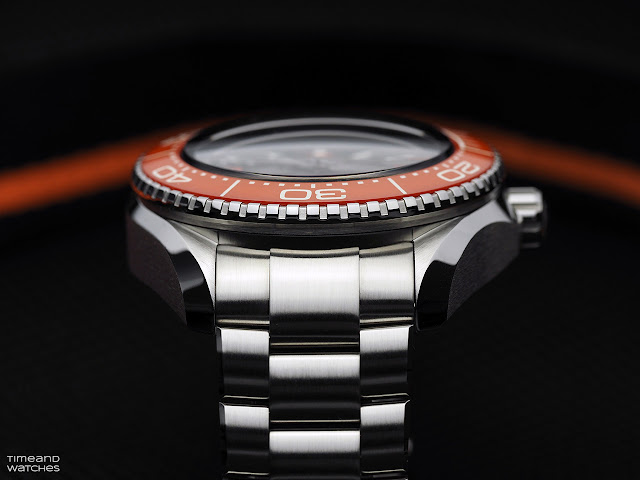The key features of a professional diver's watch, including water resistance and functionality, in a concise and informative guide.
Diver's watches are celebrated for their robust design, precision, and ability to perform under extreme conditions. Whether you are a diver or simply an enthusiast of finely engineered timepieces, it is important to understand what distinguishes a true professional diver's watch.
Some models even feature special, and sometimes patented, crown protection devices.
In this quick guide, we explore the key requirements that a watch must meet to be considered a professional diver's watch, with a focus on functionality, durability, and adherence to international standards.
1. Water Resistance
The most fundamental requirement of a diver’s watch is its water resistance. According to ISO 6425, the international standard for diving watches, a watch must be water-resistant to at least 100 metres / 330 feet (10 bar).
However, most professional diver’s watches offer water resistance of 200 metres / 660 feet (20 bar) or more, with some models capable of withstanding depths of 1,000 metres / 3,330 feet or more. This ensures that the watch can handle the pressures encountered during deep-sea dives.
2. Unidirectional Rotating Bezel
A unidirectional rotating bezel is a key feature that allows divers to track elapsed time underwater.
The bezel typically has a 60-minute scale and rotates only in one direction—counterclockwise. This design prevents accidental rotation that could mislead the diver about their remaining dive time, ensuring safety.
The bezel should also have a secure grip, often with knurled edges, to allow for easy operation even with wet or gloved hands.
Some models feature an internal rotating bezel that can be adjusted via a specific crown.
3. Legibility
Underwater environments often present low-light conditions, so a diver’s watch must be highly legible at first glance.
This is achieved through the use of large, contrasting hands and hour markers, often coated with luminescent material like Super-LumiNova, which glows in low-light conditions.
The minute hand, in particular, is made more prominent for tracking dive times, and the dial should remain readable from various angles and in murky conditions.
4. Durable Construction
Durability is another critical aspect of a diver’s watch. The watch case, typically made from stainless steel, titanium, or ceramic, must be resistant to corrosion from saltwater and able to withstand impact and pressure.
The crystal, often sapphire, is scratch-resistant and treated with anti-reflective coatings to enhance visibility.
A screw-down crown and caseback further enhance the watch’s water-tightness and resistance to external pressures. The crown is often protected against impact by large guards.
5. Shock and Magnetic Resistance
Diver’s watches must also be resistant to shocks and magnetic fields, both of which can affect the accuracy of the timepiece. According to the ISO 6425 standard, a diver’s watch should be able to withstand shocks equivalent to a drop from about one metre onto a hard surface.
A diver's watch should resist magnetic fields of at least 4,800 A/m, maintaining accuracy within ±30 seconds per day after exposure. Many modern diver’s watches use materials like silicon for the balance spring to reduce the impact of magnetism.
6. Strap/Bracelet
A diver’s watch must be securely attached to the wrist, with a strap or bracelet designed to withstand the rigors of underwater use.
Rubber and textile straps are popular for their water resistance and flexibility, while metal bracelets often come with a diver’s extension to fit over a wetsuit.
The material should be resistant to corrosion, and quick-release mechanisms are a plus for easy strap changes.
7. Helium Escape Valve (for Saturation Diving)
For professional divers who engage in saturation diving, a helium escape valve is an essential feature. During prolonged deep dives in pressurized environments, helium can seep into the watch. Upon resurfacing, the pressure difference can cause the crystal to pop off.
A helium escape valve allows the gas to escape safely without compromising the watch’s integrity. While not a requirement for all diver’s watches, it’s a crucial feature for those engaged in this specialized type of diving.
A true diver’s watch is more than just a stylish accessory; it is a precision tool built to perform in extreme conditions. Understanding the key features of a diver’s watch helps you choose a timepiece that not only looks good but also functions reliably when needed.
Whether you're planning to dive into the sea or simply appreciate the engineering behind it, knowing what makes a watch suitable for diving is the first step in your journey.



































Useful article. Please do more fo these guides.
ReplyDelete